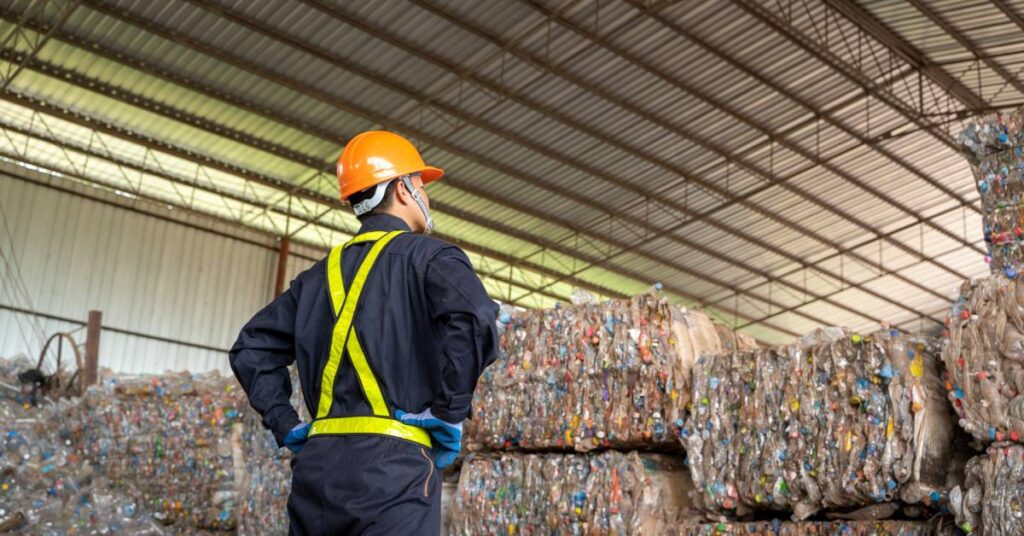As global awareness of environmental challenges grows, sustainability has never been more important. The manufacturing industry, known for its significant resource consumption and waste generation, has the opportunity to change things. Here are six steps manufacturers can take toward sustainability.
The Resource-Intensive Nature of Manufacturing
Manufacturing remains one of the most resource-intensive industries due to its reliance on raw materials, energy, and water. Each production stage, from sourcing materials to final assembly, demands significant input.
Fortunately, sustainable practices address these challenges. Let’s explore the improvements each step can make.
Step 1: Adopt Renewable Energy
Manufacturers can reduce their environmental impact through renewable energy sources. Solar, wind, and hydropower are diverse, sustainable solutions. Solar energy, for instance, allows facilities to use sunlight and convert it into electricity. Wind turbines provide a consistent energy source in regions with high wind. Lastly, hydropower benefits facilities near water sources, turning water flow into a reliable energy supply.
Overcoming Initial Investment Challenges
While renewable energy adoption may seem financially challenging due to initial costs, several strategies can alleviate this burden. Government incentives, such as tax credits, can assist in offsetting these expenses.
Collaborations with renewable energy providers can also result in cost-effective solutions, such as power purchase agreements that spread initial costs over a longer period. Further, a phased implementation strategy allows manufacturers to gradually transition their energy sources, balancing investments with savings and minimizing financial strain.
Long-Term Benefits of Renewable Adoption
The shift to renewable energy reduces cost, enhancing brand reputation and resilience against fluctuating energy prices. Consumers favor companies that demonstrate environmental responsibility, and renewable energy adoption can position manufacturers as leaders in sustainability.
Additionally, reliance on renewable sources protects operations from the fossil fuel markets, creating a more predictable, stable financial outlook.
Step 2: Improve Energy Efficiency
Manufacturers can improve their energy efficiency with advanced lighting solutions. Transitioning to LED lighting offers a straightforward method to reduce energy use. LEDs consume less power and have longer lifespans than traditional lighting, decreasing maintenance needs and operational costs.
Moreover, modernizing machinery with energy-efficient motors is another avenue for increasing productivity while reducing energy consumption. Smart energy management systems analyze and optimize energy use across facilities. These systems offer real-time data insights, allowing manufacturers to identify and rectify inefficiencies swiftly.
Facilitating Energy Audits and Training
Regular energy audits uncover areas needing improvement, guiding manufacturers in prioritizing energy-saving initiatives. Complementing this are employee training programs so staff understand and support energy-saving practices. When employees participate in these initiatives, the organization cultivates a culture of efficiency and continuous improvement.

Step 3: Reduce Waste
Implementing waste reduction strategies is one of the biggest steps manufacturers can take toward sustainability. First, companies can use lean manufacturing techniques that streamline operations and enhance productivity.
This idea focuses on eliminating non-essential processes and identifying areas where waste occurs, such as excess inventory or inefficient workflows. Lean manufacturing is environmentally friendly and improves operational efficiency and cost savings.
Additionally, recycling repurposes materials that might end up in landfills. For instance, manufacturers can recycle metals, plastics, and paper, turning them into new products or components. Employee involvement in recycling programs further boosts participation and success rates.
Solvent Recycling and Chemical Waste Reduction
Solvent waste is a significant challenge for manufacturers, but solvent recycling systems provide a solution for reclaiming and reusing these chemicals. These systems recover used solvents, purifying them for reuse in production processes. The equipment reduces new solvent purchases and minimizes hazardous waste disposal.
Although implementing solvent recycling requires an initial investment, the method offers long-term cost savings and environmental benefits.
Composting and Organic Waste Management
Composting organic waste is an effective way to turn waste into valuable resources, such as nutrient-rich soil amendments. Manufacturing facilities that produce organic waste, like food scraps or plant materials, can implement composting systems to manage this waste responsibly.
This process reduces landfill contributions and supports sustainable agriculture and landscaping efforts. Manufacturers can collaborate with local farms or community gardens to distribute composted materials, creating a beneficial cycle of waste reuse.
Leveraging Technology for Waste Tracking
Using technology to track waste generation and disposal provides manufacturers with valuable insights into their waste management processes. Advanced software systems enable real-time monitoring, helping companies identify inefficiencies and areas for improvement.
Data analytics guide decision-making and support the development of targeted waste reduction strategies. Manufacturers can rely on technology to measure the success of their efforts and set achievable waste reduction goals.
Step 4: Source Sustainable Materials
Biodegradable options, such as plant-based plastics, naturally decompose, minimizing environmental impact. Recycled materials like reprocessed metals and plastics reduce resource consumption and carbon emissions. Responsibly sourced materials, including Forest Stewardship Council (FSC)-certified wood, ensure ethical supply chains and maintain natural ecosystems.
Establishing strong relationships with suppliers maintains a steady flow of sustainable materials. This collaboration can lead to joint innovation efforts, resulting in new sustainable product designs. Additionally, bulk purchasing agreements help manufacturers lower costs while securing a consistent supply of materials.
Step 5: Implement Circular Economy Practices
Manufacturers embracing circular economy practices focus on designing products with end-of-life recovery in mind. These practices involve creating items that people can easily disassemble, repair, or recycle, thus extending their lifecycle.
Product redesign may include modular components that simplify maintenance and facilitate future upgrades. This approach reduces waste and maximizes the value of materials used in production.
Collaborating Across Industries
Cross-industry collaborations open doors to resource sharing and innovation. Manufacturers can partner with other sectors to repurpose by-products or surplus materials, reducing overall waste. These partnerships may involve sharing logistics networks or developing joint recycling programs. Collaborative efforts of this nature expand sustainability impact beyond individual companies.
Investing in Research and Development
Research and development drives innovation, allowing companies to explore new sustainable practices and materials. This investment supports the development of new technologies and processes that enhance efficiency and sustainability. By continuously seeking improvements, manufacturers can adapt to changing market demands and regulatory requirements, positioning themselves as leaders in sustainable development.

Step 6: Increase Water Conservation
Water scarcity is a pressing global issue. Manufacturers must reduce water usage to minimize their environmental footprint. Responsible water management preserves valuable resources and enhances a company’s reputation as a sustainable leader.
Companies can install low-flow fixtures and water-efficient equipment to decrease usage without compromising operational efficiency. Regular maintenance and inspection prevent leaks and water wastage. Additionally, recycling and reusing processed water reduces freshwater requirements. Investing in water-saving technologies secures a resource-efficient future.
Manufacturers have the power to drive meaningful change through sustainable practices. From renewable energy to circular economy practices, each step offers unique benefits. Companies should seize this opportunity to take charge of creating a greener future.

